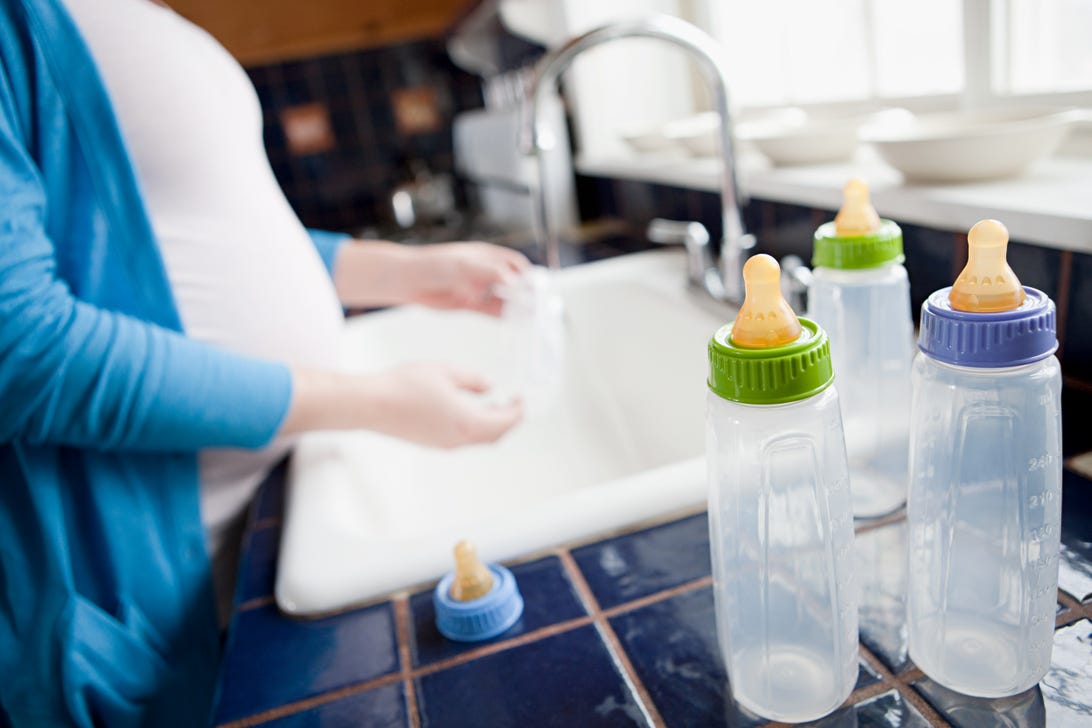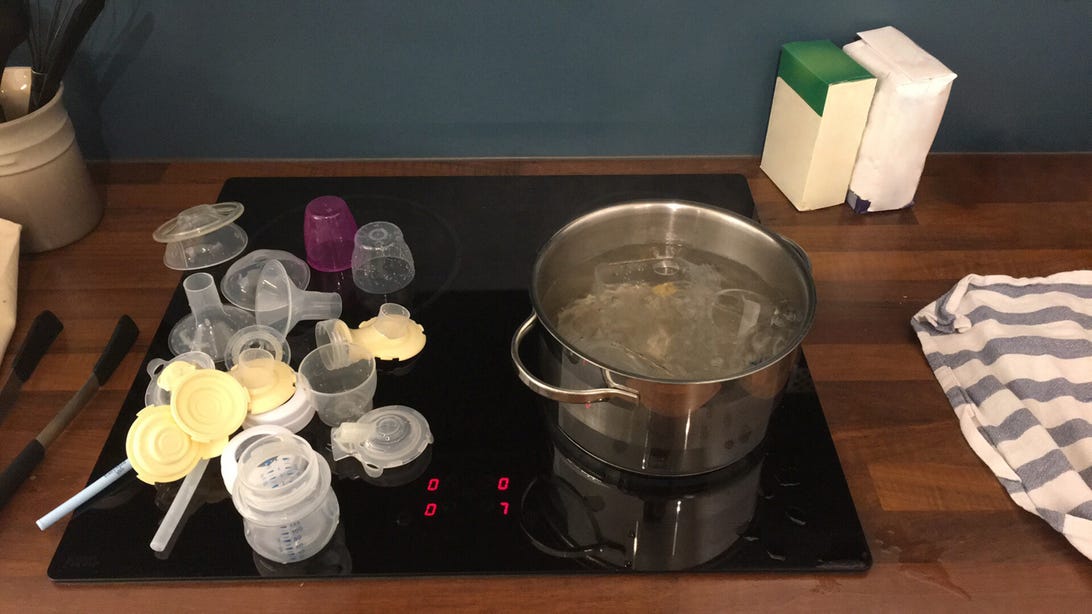
As a new parent, there are a lot of things out of your control, and in most cases, you're operating with more exhaustion and less sleep than usual. One way parents reduce their worries is by keeping their newborn's environment as hygienic as possible, from excellent baths to clean linens. Sterilizing baby bottles is just one way to keep a baby's immune system out of harm's way.
However, it's also important to recognize when sterilizing is a valuable addition and when it may actually just be taking your attention away from the many other tasks that you need to accomplish. We'll look at different methods of sterilizing, what the experts say about how sterilization of bottles can keep harmful bacteria at bay, and when not to bother with bottle sterilizing, according to the Centers for Disease Control and Prevention.
Plus, here's what to do if you're running low on baby formula, a list of our favorite breast pumps, and some baby registry must-haves (including some bottles we love). You can also check out our picks for the best diapers, best baby monitors, best car seats and best baby clothes.
Why is it important to sterilize your baby's bottle?
Babies under 3 months old are still developing their immune system, and many infections that would be more mild or moderate at older ages can be severe in these months. While cleaning bottles thoroughly and immediately using them is usually enough to remove harmful bacteria, viruses and other contaminants, for the first three months of a baby's life, sterilizing bottles daily or more often is another recommended level of protection.

When should you sterilize and clean your baby's bottle?
Be aware that cleaning involves soap and hot water and the removal of any residues on the inside or outside of the bottle and its associated parts. Sterilizing, on the other hand, is specifically about using either heat or chemicals on the bottle and any associated parts to further kill any remaining microscopic bacteria that might have escaped the cleaning process.
You should clean bottles when you buy them, as well as after each use and before reuse if it's been some time since the clean bottle was used. Ideally, bottles should also be sanitized when you buy them and between uses.
Read more: Best Baby Food Delivery Services and Subscriptions for 2022
How often should you sterilize baby bottles?
Bottles are used many times a day, and depending on how many you have, you may only need to sanitize a batch of bottles once a day before every use. However, many of the resources from pediatricians are less focused on sanitizing than ever before, leaving sterilizing frequency up to parents in many cases. Many dishwashers have a sanitizing setting, which quickly does the job for you if your bottles are kept in the top rack of the dishwasher.
When to stop sterilizing baby bottles, according to the CDC
The CDC recommends sanitizing at least daily until the baby is 3 months or older and for longer if they're immunocompromised. Otherwise, it's not as big of a priority, but you may still want to sanitize your older baby's bottles if:
- You know the bottle had milk sit in it for many hours or even a day
- Your baby has been sick or is on a medication that weakens their immune system
- Your water supply has been critiqued for some kind of contamination
- You're on well water (which can be fine, but you also might have less information on the water's overall quality)
- You have a way to do it quickly and safely and without inconveniencing yourself or the baby's other caregivers

How to clean and sterilize baby bottles
There are dedicated sterilizers designed for particular kinds of baby bottles and sterilizing settings on dishwashers. When these are used correctly, they don't require additional sterilization. If you don't have these options, there are three other ways to sterilize your bottles.
Sterilizing baby bottles with boiling water
1. Thoroughly wash all baby bottles and parts. Leave them disassembled.
2. Put all items in a clean pot and fill the pot with water to where all of the bottle parts are submerged.
3. Bring to a boil and keep at a full boil for 5 minutes.
4. Use clean tongs to remove the bottle parts and place them on a clean towel or paper towel to fully dry.
Sterilizing baby bottles with steam
1. Thoroughly wash all baby bottles and parts. Leave them disassembled.
2. Read the instructions on your particular steam-in-bag sterilization system, such as the Medela bag system.
3. Place the required amount of water and only as many parts as fit the bag, allowing it to close.
4. Follow the instructions on how long to sanitize in the microwave.
5. Remove using a clean pair of tongs once the bag isn't too hot to open. Place on a clean towel or paper towel to fully dry.
Sterilizing baby bottles with an antibacterial chemical
1. If boiling and steaming aren't possible, using a dilute solution of bleach (2 teaspoons of unscented bleach per gallon of water) in a clean basin is an alternative method mentioned by the CDC.
2. Thoroughly clean all baby bottles and parts and leave them disassembled.
3. Place all parts in the solution carefully, adjusting them to make sure no air bubbles prevent part of a surface from being touched by the solution.
4. Leave all items fully immersed for 2 minutes.
5. Use clean hands or clean tongs to take the items out and place them on an unused towel or paper towel.
6. No need for rinsing as long as the items are fully dry before they're used again. Rinsing reintroduces trace microorganisms that were destroyed by the bleach.
How to store baby bottles after sanitizing
Once your baby bottle parts have dried completely, you can assemble the bottles for easy use when you next need them. Closed kitchen cabinets are good places to store the bottles, where they won't interact with as much air as they would on a kitchen counter, and they should only be stored with other clean items.
If any step in your drying or storage process traps moisture on the bottles, it can make germ growth more likely. Drying racks that sometimes lead to some trapped moisture, so sanitize the rack itself every few days if that's your preferred method.
Sanitizing bottles is no longer a universal recommendation for all of the time that babies drink from bottles. However, if you can fit it into your schedule or you have a circumstance that makes it a good fit for your family, it can provide just one more layer of protection for the new addition to your family.
The information contained in this article is for educational and informational purposes only and is not intended as health or medical advice. Always consult a physician or other qualified health provider regarding any questions you may have about a medical condition or health objectives.









 Add Category
Add Category